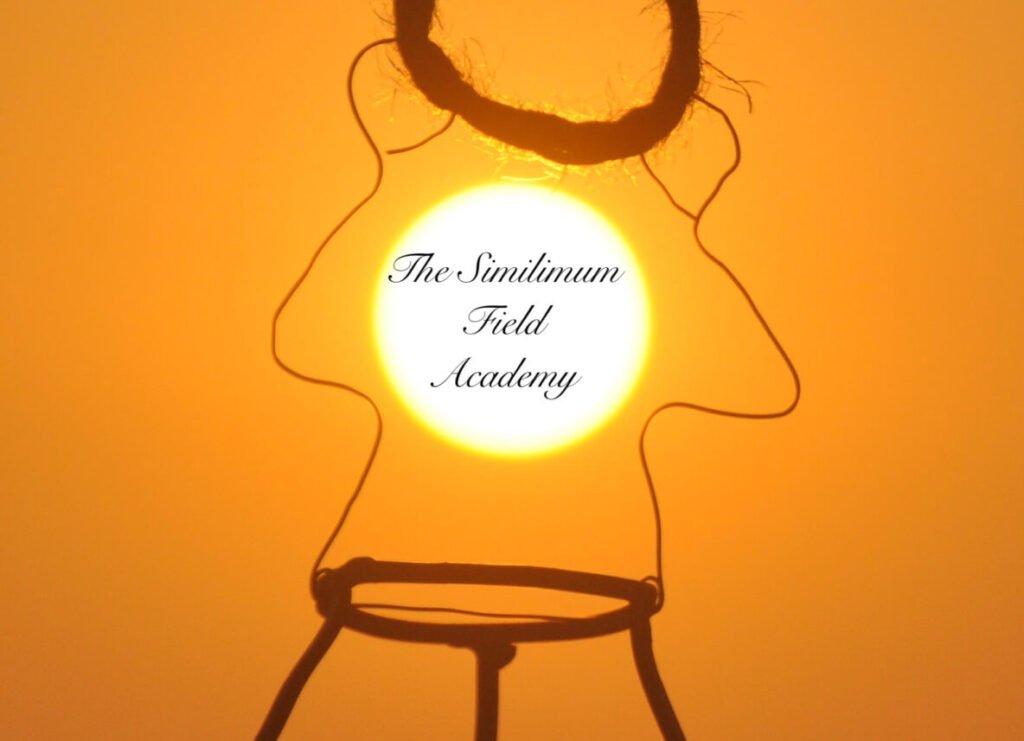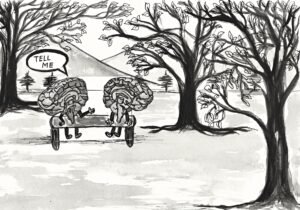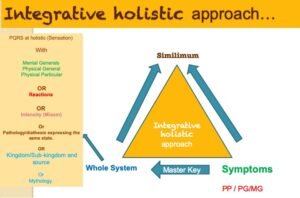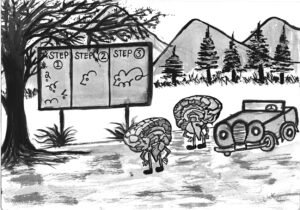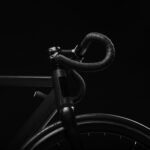CASE WITNESSING MODULE
The Journey And Concept Of Multi-Dimensional Module of
Case Witnessing Process And Its Developments
CONCEPT OF HOLISTIC INDIVIDUALISATION:
The most primitive and pivotal step for the homoeopath is to understand the individualistic, peculiar, queer, and rare symptoms (PQRS) expressions of the patient.
We do know that during case-taking, the patients give us a mixed bag of symptoms. Common and peculiar symptoms are all thrown in together in a random manner. From this mixed-up pile, we need to pick up the most peculiar characteristic symptoms of the patient so that we may understand the individuality of the patient.
Dr. Hahnemann has emphasized the utmost importance of finding the peculiar symptoms that would assist us in our search for the remedy
The peculiar symptoms where the mind and the body are connected and speak the same language, or where the mind and the body react in unison with each other, are of utmost importance as these peculiar symptoms are at the holistic level. The peculiar symptom at the holistic level which is also repetitive, is designated as the most holistic individualistic symptom in the patient (The Master Key). This symptom is the point at which all the central and peripheral symptoms converge. It is the point where everything flows in unison, and where the two principles of homeopathy “individualization and holism” connects with each other. Individualization at the holistic level is a perennial foundational step on which homeopathy is grounded.
The master key , once found, is an amazing gift. With the help of this Master key, all the un-connected, fragmented symptoms at various levels, that were presented in a random manner during case taking, start getting connected and begin to form a complete process or a phenomenon.
To summarize, the healing journey starts from the symptoms. During case taking, the peculiar symptoms at the holistic level start coming up. Depending on the individuality of the patient all the randomly presented symptoms begin to come together and then slowly the entire system begins to evolve right in front of us. When we arrive at the core or the centre of the patient, all that is left for us to do is to match it with the holistic core/centre of a remedy. The patient guides us toward the method which will help us in selecting a remedy that would be his or her simillimum.
STORY OF WILLIAM BURROUGHS:
I wrote about an author, William Burroughs, who introduced the Cut-Up technique for writing his books.
He began his books without a definite storyline. He spent plenty of time gathering bits of sentences, words, phrases, lines and paragraphs from each and every source of writing that appealed to him in some way.
He set about arranging these random, completely abstract, scattered, unplanned, non-logical bits of sentences, quotes and write-ups till eventually and slowly, the scattered, non-connected meaningless sentences began making sense, everything began to come together and a meaningful and interesting story emerged.
Without a fixed, planned beginning, and end to his story, he went from a completely abstract scattered phenomenon to a well-connected whole. This journey from non-coordination to coordination is a universal phenomenon which I have observed. And it usually happens in 3 steps.
I see the same process occurring in homeopathy too – the process of emergence of order from randomness.
THE BIRTH OF CASE WITNESSING PROCESS
I decided to devote whole life into developing simple, scientific , reproducible , case taking process aim of which is to bring not only PQRS at local, general but at holistic level also – a PROCESS which is diagnostic as well as therapeutic
Next aim was even though we all believe in individualization and wholism we all do case taking according to one book , one person, one system oriented I wanted a system which is integrative, Holistic which include every school of homoeopathy.
And in my search I developed a module of case taking which I call Case Witnessing Process- developed 3 steps of simple, scientific, reproducible, integrative method of case taking.
I like to call this CASE WITNESSING as in taking and receiving we do it accordingly to our need but in witnessing we witness as it is.
So this whole method is integrative, Holistic, 3 steps of case witnessing process which can be done with any school, any age, any pathology and with any special conditions like non verbal children, psychiatry, geriatric cases , deep pathological and many other variety of cases
THE 3 STEPS OF CASE TAKING ARE AS SIMPLE AS BELOW PICTURE:
Step 1 you put in an open-ended non-leading (Non-biased) effort and the results are scattered and not connected data – but if you closely and alertly watch amongst the scattered data some data is present and comes up again and again (As you see in the picture in the first column it’s the dot)- this data we name it as Master Data.
With the help of that Master Data, you start STEP 2: Where gradually as you explore the Master data the rest of the data starts getting connected to this master data as you see in the step 2 image above.
Once you are sure of this happening start STEP 3 by asking about that master data and keep exploring that data till every other scattered data of steps 1 and 2 comes together into the pattern or system as you see in step 3- the Last Column of the above Picture.
In step 3 Now when you see all of you will say it’s a Rat or a mouse
In step 1 though all this data about the rat is present. But it was scattered and not connected if we try to make sense of this scattered non-connected data in step 1 itself we all come to different understandings of patient, and different remedies and we analyse and interpret in our ways.
But in step 3 mostly we all will come to a similar understanding of this thing
in a nutshell, these are the 3 steps where you put intially open ended effort then things start getting coordinated in step 2 – you put single direction effort to get the whole pattern as it is.
The Universal 3 steps got translated into three steps of case taking in an individual as – Passive step (Step 1), Active Step (Step 2) and Active – Active Step (Step 3) The whole concept and detailed steps are mentioned in my 1st book “Scientifically Intuitive Case Witnessing Process – A Journey of Three Steps”
FURTHER DEVELOPMENTS IN THE CASE WITNESSING PROCESS:
Applying these three steps of the case witnessing process in case after case, I saw that these three steps evolved and developed further
As I began to work on different cases, for example, cases of abuse, trauma, irreversible pathology, retakes, old age, and non-verbal children, I saw my understanding of these three steps going through a growth spurt. My understanding further evolved with the introduction and application of the right brain methods
With these developments and evolutions, now, the three steps in case witnessing process are further divided into a few sub-steps.
- Passive Case Witnessing Process (PCWP):
- a) Open Passive :
- b) Guided Passive:
Guided passive provides an opportunity to come to a clearer Master Key (holistic individualistic symptom in the patient) in case specially when we are not able to trace it down during Passive step.
The areas that we can explore during the Guided-Passive CWP are:
- Subconscious Areas (Fear/Dreams/Interests and Hobbies/Childhood etc.).
- Illness:
- Guided passive With PQRS symptoms which came up in passive
- The right-brain/non-logical/non-linear methods: The right brain methods act as the most important tool for completely taking the patient from a logical, conscious level talk, to a non-logical, non-rational, non-linear talk thus helping to surface out the Master Key and also have a deeper understanding of the whole pattern.
- Different possible right brain methods that I have been using and those that we will see in details of Dr Dinesh’s book- ‘The Right Brain Approach in Homoeopathy’
- Active Case Witnessing Process (With and without the master key) (ACWP)
- Active-Active Case Witnessing Process (AACWP)
The Finale step is also divided into various sub-steps to create a similimum field during the interview and have a transformational effect of the case-taking journey to its best possibility.
- Giving the whole picture to the patient:
To facilitate the initiation of the healing process, we can take a little time at the end of the session to talk with the patients and explain to them what we have understood. As a holistic homeopath, in my view, this is the best gift we can offer to our patients— give them the whole picture as the very first dose of the simillimum.
- Giving two sides to the patient:
Give the patient the whole picture and make him see that he is made of two equal and opposite sides. Both these sides are part of him and make him whole. When properly explained and understood, an acknowledgement of these two sides becomes therapeutic.
- Making the patient aware:
In many patients, specifically with high level of experience and the ones who have touched their whole, we see the emergence of this awareness, and the transformative changes begin to occur at the case taking level itself.
- Designer’s Diary:
A Designer’s Diary is a specifically designed tool that provides a conscious space to the patient for spontaneous, non-logical, non-linear expressions. Designer’s diary offers the patients a space to observe his own repetitive patterns through his own expressions.
- Giving a holistic, patient-centric guidance:. Guidance is designed in such a way that it is totally specific to the patient and therefore, it begins to include and involve the patient and makes him a part of the healing process.
THE STRUCTURE OF CASE-TAKING MODULES:
The Modules are available on Live and Recorded platforms
In both platforms you will see case-taking modules are further divided into Long and Short Modules
SHORT MODULES:
Covers The whole concept of case taking, Detailed Understanding of The Three Steps of Case Witnessing Process and an Illustrative appropriate case to demonstrate the topic.
The Duration of Short modules range from 1-2 sessions.
LONG MODULES:
Present the In-depth elaborative Concept of The steps of the Case Witnessing Process. Further Covering various variations possible with different types of cases thus giving you a broader perspective and more topics to learn and apply. The illustrative cases included complementing the learnings seamlessly.
The Duration of Long modules ranges from 4-6 sessions.
The Range of Topics Included in Case Taking Modules (Short and Long)
SHORT MODULES:
- Case Witnessing Integrative Multidimensional Module
- Acute Case Witnessing Module
- Deep Pathology Module
- Degenerative diseases module (Lung, Heart, Brain, Liver, GIT etc)
- Proliferative diseases module (Infective, Cancer, Autoimmune)
- Child centric Case Witnessing Module
- In Verbal Children
- Imaginary age (upto 7 yrs)
- Teenage
- In Non verbal children (with uniquely able children)
- In Verbal Children
- Elderhood Centric Case Witnessing Process
- In Difficult Conditions
- Module of Case Witnessing in Psychiatric Diseases
- Module of Case Witnessing in Organ Transplant
- Module of Case Witnessing in People Stuck in Common Day to Day Situations, belief system and one-sided state, situations and illness
- Module of Case Witnessing in Coma
- Module of Case Witnessing in Retake
NEW TOPICS PROGRESSIVELY WILL KEEP GETTING ADDED TO COVER MORE AND MORE RANGE AND ADD NEW DEPTHS TO THE CASE-TAKING MODULES.
STRONGLY RECOMMENDED:
We would highly recommend viewing our Signature Integrative Multidimensional Concept Module and Basic Case Witnessing Module (L) prior to any specialised topic of the Case Taking Modules.
READ MORE ARTICLES RELATED TO CASE WITNESSING PROCESS ON THE BELOW LINKS:
- Case Witnessing Process in Children Cases: https://www.casewitnessing.com/new-integrative-holistic-homeopathic-approach/contact-component/cwp-in-children-cases.html
- Case Witnessing Process in Non verbal Children Cases: https://www.casewitnessing.com/new-integrative-holistic-homeopathic-approach/contact-component/cwp-in-non-verbal-cases.html
- Case Witnessing Process in Acute Cases: https://www.casewitnessing.com/new-integrative-holistic-homeopathic-approach/contact-component/cwp-in-acute-cases.html
- Case Witnessing Process in Difficult Conditions: https://www.casewitnessing.com/new-integrative-holistic-homeopathic-approach/contact-component/cwp-in-difficult-conditions.html
CLICK HERE TO JOIN LONG MODULES
